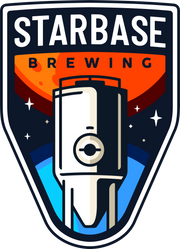Starbase Texas Map
Beginner's Guide to Starbase — SpaceX's South Texas Starship Facility
Quick Links
- The Starship Program
- The Build Site at Starbase
- The Sanchez Site at Starbase
- The Massey’s Site at Starbase
- The Town of Boca Chica
- The Launch Site at Starbase
- Orbital Launch Integration Tower
- The Chopsticks / “Mechazilla”
- Orbital Launch Mount
- The Quick Disconnect Arm
- Water Deluge System
- Second Orbital Launch Tower
- Tank Farm
- Self-Propelled Modular Transports
- And Much More Coming Soon...
- Updated Maps of Starbase Texas
Starbase, located near Brownsville in South Texas, has emerged as a focal point for modern space exploration. Initially a quiet, remote area near the border of Mexico, Starbase has transformed into a bustling hub of innovation, spearheaded by SpaceX's vision to colonize Mars. In just a few short years, Starbase has grown to be the most advanced rocketry facility in the history of the world.
"Life at Starbase" Hype Video. Video Credit: SpaceX
It has been over a year since our first Starbase guide was published. At the speed SpaceX moves, this feels like a lifetime ago. This new-and-improved guide invites you to explore Starbase's various aspects, from its cutting-edge production facilities to its state-of-the-art launch pads to its vibrant community, each of which plays a pivotal role in humanity’s journey to the stars.

Flyover view of Starbase Texas. Photo Credit: RGVAerialPhotography
Welcome to Starbase. Welcome to the Gateway to Mars.

A Starship behind the "Gateway to Mars" sign. Photo Credit: Starbase Surfer
The Starship Program
Depending on how closely you follow SpaceX, you may or may not have heard of the Starship program. The Starship rocket is SpaceX’s most audacious project yet: the largest and most powerful launch vehicle ever created. Even more importantly, the entire rocket is designed to be fully reusable. This means it can launch to space, deploy a payload, and then return to Earth to be rapidly refueled and launched again — similar to how an airplane works.

The “fully-stacked” Starship rocket is composed of two parts: the upper-stage “Ship” and the lower-stage “Booster”. When combined and fueled, Starship is nearly 400 feet tall, 30 feet wide, and weighs 5000 tons. Powered by dozens of SpaceX’s full-flow staged combustion Raptor engines, Starship has nearly twice the thrust of the Apollo moon rocket — previously the most powerful rocket ever created by humans.

A Lower Stage “Booster” (B10). Photo Credit: Starship Gazer
Ultimately, Starship is the missing piece that will truly unlock full-scale colonization of the Moon and Mars. If there’s one thing you need to know before reading this guide, it is that everything at Starbase is built around how to rapidly prototype, build, test, and launch Starships.

A “Fully-Stacked” Booster and Ship. Photo Credit: Starship Gazer
The Build Site at Starbase
We’ll kick things off at the Build Site. This area, also referred to as the Shipyard, is where much of the action happens at Starbase. The Build Site consists of the factory portion of Starbase, where large rolls of stainless steel and Raptor engines go in one end, and fully-stacked Starships and Boosters come out. The Build Site has two distinct sets of buildings: the Starfactory and the Bays.

Close-up of the Build Site at Starbase. Photo Credit: RGVAerialPhotography
The SpaceX Starfactory
A relatively recent addition to Starbase is the Starfactory, a building which Elon Musk has deemed “the machine that builds the machine”. Previously, most of the vehicle fabrication and welding was done in large manufacturing tents. In the latter half of 2022, SpaceX began removing these tents and replacing them with one massive all-encompassing building called the Starfactory.

Starfactory under construction. Photo Credit: Starbase Surfer
The Starfactory is a marvel of modern engineering and a cornerstone of SpaceX's vision for space travel. While building the Starfactory, SpaceX implemented numerous learnings from Tesla on how to scale mass manufacturing. Instead of building electric cars though (like Tesla is doing a couple hundred miles away at Giga Texas) the focus here is on Starship, a spacecraft designed not just for orbit but for interplanetary journeys.

Aerial photo of the Starfactory expansion at Starbase. Photo Credit: RGVAerialPhotography
This facility is expected to play a critical role in SpaceX's ambitious goal of eventually manufacturing one Starship per day to enable the colonization of the Moon and Mars. Not much is known yet about how the Starfactory is set up inside, but it is believed to be organized into different zones, with each one specializing in a specific part of the spacecraft's construction. This is similar to the prior model of manufacturing in tents where teams worked on various components of the Starship at different stations — from cutting steel for the initial sections to the intricate assembly of rings by robotic welding machines.

A look inside one of the manufacturing tents at Starbase. Photo Credit: Screenshot from Everyday Astronaut’s Starbase Tour with Elon Musk Video
One thing is certain: SpaceX will continue developing innovative manufacturing techniques and integrating them into the production process in the Starfactory. This will allow them to maintain a flexible, iterative approach to spacecraft design, and ensure that each iteration of the Starship is more advanced than the last. (And hopefully it’s just a matter of time until we get to see the inside with another great tour!)
The High Bay and Mega Bays
There are currently three bays, with the second Mega Bay being the most recently completed. Each of these structures are outfitted with bridge cranes which means they play a major role in the process of stacking Starships and Boosters.
- The High Bay is the oldest of the Bays. Inside is where Starship nosecones are joined to the body sections. Previously it was used for Booster assembly work as well, but most of this has moved to the wider Mega Bays. In the past, Elon Musk has stated that the top floor of the High Bay will become a “High Bay Bar” with panoramic views of the RGV and a glass floor that allows visitors to look down and see the rocket-building processes taking place below.
- The Mega Bay (sometimes called the Wide Bay) is able to support parallel builds on Starships and Boosters thanks to multiple bridge cranes. It is roughly the same height as the High Bay, but twice as wide. As of early 2024, the Mega Bay will be the assembly bay for all Boosters going forward.
- The Mega Bay 2 is the newest building. It is almost the exact same height and size as the Mega Bay. As of early 2024, it is believed that the 2nd Mega Bay will be the new assembly bay for all Starships moving forward.

High Bay (left), Mega Bay (center), Mega Bay 2 (right). Photo Credit: RGVAerialPhotography
In the past, there was a Low Bay where rings were welded and nosecones were tiled, and a Mid Bay where Starship bodies, test tanks, and ground service equipment (GSE) tanks were assembled. Both of these Bays were demolished in order for the Starfactory to be expanded.

A Starship inside of Mega Bay 2. Photo Credit: Starbase Surfer
Stargate Building
The final building worth noting at the Build Site is the Stargate building. This satellite location for UTRGV provides research labs, classrooms, and business offices. The invite-only check-in area for Starbase visitors is located near here as well.
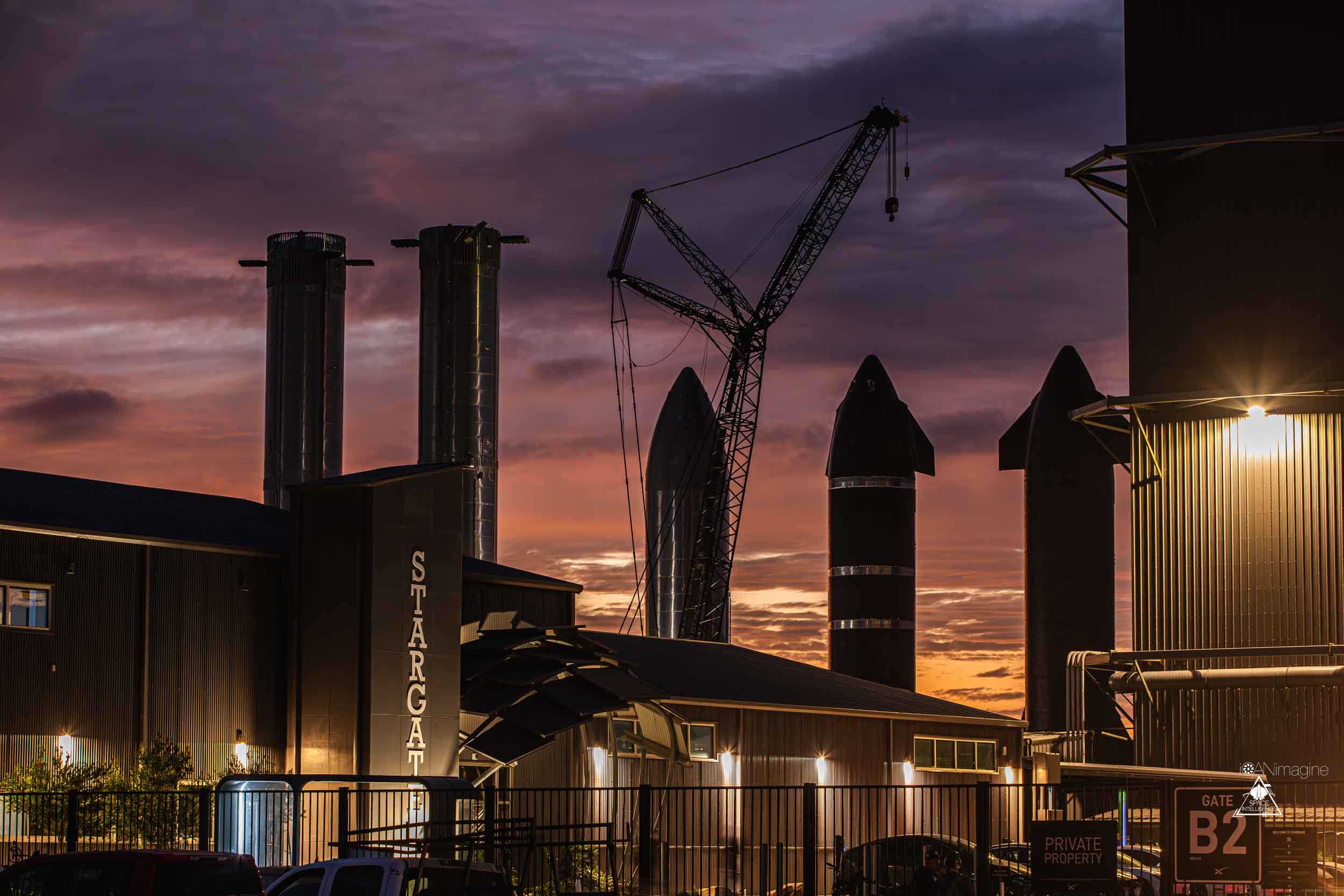
Stargate building at sunset. Photo Credit: Starbase Surfer
The Sanchez Site at Starbase
The Sanchez site consists of everything immediately southwest of the Build Site. Named after the previous owner of the land, a company called Sanchez Oil and Gas, this site is mostly used as a general purpose storage and staging area for equipment.

Overview of the Sanchez Site. Photo Credit: RGVAerialPhotography
The SpaceX Rocket Garden
One of the most iconic spots at Starbase is the Rocket Garden. A favorite spot for roadside photographs, this is a temporary staging area for Starships and Boosters when they are not in use. Typically, there are at least four vehicles parked here waiting on anything from engine installation to scrapping (destruction). This area is wildly in flux — oftentimes a rocket will only be parked here for a couple of days, but occasionally one will sit here for 4 months with no activity.
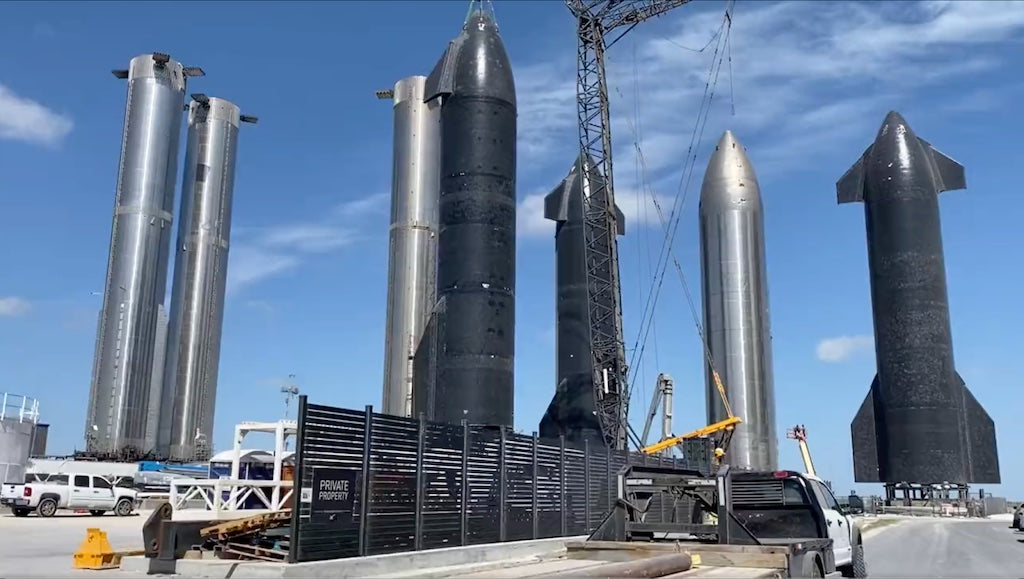
3 Boosters and 4 Starships parked in the Rocket Garden. Photo Credit: Screenshot from RGVAerialPhotography video
The Rocket Garden is located on the northwest corner of Remedios Avenue, just past the employee Tiki Bar. For years, this road was open to the public and anyone could walk up within 100 feet of the massive staging area, as long as they stayed on the opposite side of the road from SpaceX’s property. However, in November 2023 this road was officially closed off to the public. It is unknown if the road to the Rocket Garden will reopen again in the future.
 |
 |
Left: Two of the very first cans of Starbase beer ever produced (before we even had labels!) being consumed in the Rocket Garden at sunset.
Right: Rocket garden photo shoot with the first four Starbase Brewing printed cans prototypes.
Staging Area / Storage
The primary use of the Sanchez site has been as a staging area for key Starbase infrastructure. Many important pieces of equipment were assembled at the Sanchez site including the Orbital Launch Tower, the Engine Stand, Storage Tanks, and the Cryoshells.

Sections of the water-cooled plate (discussed below) stored at Sanchez. Photo Credit: RGVAerialPhotography
A Future Propellant Plant?
In the past, the Sanchez site was also rumored to be the site of a propellant plant, a desalination plant, and a natural gas plant. All of these plans seem to have been scrapped (at least temporarily) by the FAA Environmental Review.
Many armchair analysts expect SpaceX to eventually build a propellant plant at one of their facilities so that they can begin testing a potential Sabatier System. The Sabatier Reaction allows for producing liquid methane and liquid oxygen, the two propellants needed for Starship’s Raptor engine. This propellant and oxidizer were chosen specifically for their ability to be generated on Mars, and proving this technology works on Earth will allow SpaceX to build ISRU (in-situ resource utilization) plants on Mars. This means propellant for Starships could be manufactured on the Martian surface, allowing for return journeys to Earth.

The Starbase sign at the Sanchez site is a great place for photos
The Massey’s Site at Starbase
Starbase Testing Operations
The Massey’s Site is a newer addition to the scene at Starbase. Massey’s is named after the original tenant of this piece of land, Massey’s Gun Shop and Range. SpaceX purchased this land in 2021, and has been gradually turning it into a state-of-the-art testing facility over the past two years. Throughout that time, it played host to some interesting prototypes including the extraordinarily memorable “can crusher” tests. At least for now, the gun range is still operational and can be found on Google Maps.

Overview of the Starbase Massey’s site. Photo: RGVAerialPhotography
As of early 2024, a large number of propellant holding tanks have been installed at Massey’s. At an invite-only meeting in Brownsville in December 2023, Kathy Leuders (SpaceX’s General Manager for Starbase) confirmed publicly that SpaceX intends to move most of the cryogenic and static fire testing campaigns to this location in the near future. This would free up the launch site to be focused primarily on actual launch operations. Some Starbase commentators believe that a traditional flame trench diverter system is in the works here as well.

Can Crusher rig hooked up to a test tank at Massey’s. Photo: Starship Gazer
During that same meeting, Kathy reiterated that SpaceX was doubling down on the RGV area and that they would begin construction on a second launch tower soon. At one point, it had been rumored that SpaceX might try to split launch operations between South Texas and Cape Canaveral (a.k.a. “Starbase Florida”) with Starbase Texas focusing more on research and development.
SpaceX Mission Control
Across Highway 4 from the entrance to Massey’s (though not technically a part of the site) there is a small roundabout with a few structures. This enclave is home to Starbase Mission Control, stationed here so that it is outside of the designated exclusion zone during launches which covers the entire Launch and Build Site.

Starbase Mission Control with new structures being 3D printed nearby. Photo Credit: Jack Beyer
An Austin-based company called ICON has even printed some structures in this area using giant concrete 3D printers. (ICON recently won a NASA contract to print infrastructure on the Moon so it is assumed that this construction was done as a practice run for that.)
Ad Astra School
This area is also the location of SpaceX’s Ad Astra school. This exclusive school for the children of some SpaceX employees was incorporated a few years ago inside of SpaceX’s Hawthorne rocket factory. For a while, classes were taught inside of Elon Musk’s house in Los Angeles before Starbase became the final location.

Inside the Ad Astra School. Photo Credit: SpaceX’s Life at Starbase video (Screenshot)
The Town of Boca Chica
The Village at Starbase
The village at Starbase is home to many SpaceX employees who work on the Starship program. Before the Starbase project began, this tiny town known as Boca Chica had a population of roughly two dozen people. Nearly all of these people have had their land purchased by SpaceX over the past decade as they have committed more and more resources to this area.

An aerial overview shot of Boca Chica Village in late 2023. Photo Credit: Screenshot from RGVAerialPhotography’s Starbase Weekly Ep. 100
Since 2018, the village at Starbase has grown rapidly. What began as a single street with a couple dozen homes has rapidly transformed into a small city.

Boca Chica Village in Summer 2020. Photo Credit: RGVAerialPhotography
The village is now almost entirely owned by SpaceX who has turned it into housing so their employees can more easily access the Build Site and Launch Site. Many of these homes have been outfitted with Tesla Solar Roofs and Tesla Powerwalls for battery backup.

A SpaceX employee house with a Tesla Solar Roof. Photo Credit: EthicsGradient
Elon Musk himself even owns a home on the main residential street here — which was recently appropriately renamed from Weems Street to Memes Street.

The new sign for Memes Street. Photo Credit: Stephen Shard
Mars Pathfinder Airstream Parks
Outside of the traditional brick and mortar homes, the Starbase village also houses numerous SpaceX employees in the “Mars Pathfinder” parks. Reminiscent of the Apollo Era at the Cape, these RV parks scattered around Starbase are filled with Airstream trailers that allow employees to live right near the action. Each Airstream park is named after a specific landmark on Mars like Olympus Mons. (To be clear though, many workers still drive in from Brownsville, South Padre Island, and the surrounding areas.)

Airstream park near the Bays at Starbase. Photo Credit: David Karim
2023 was a year of expansion in the village. New roads were laid, new water infrastructure was added, and the local utility finally ran three-phase power out to Starbase. (Up until this point, the world’s largest and most advanced rocket factory was running off the combination of single-phase power and generator musical chairs!)
Other SpaceX Facilities
In addition to the housing, there is a fantastic employee-only restaurant called the “Astropub” (sometimes referred to as “The Prancing Pony” or “Flaps”), a coffee bar, an employee beergarden, dog parks, a gym, and more.

The Astropub at Starbase. Photo Credit: Starbase Tourist
There are even hovercraft (yes, real-life hovercraft) that drop commuters off after carrying them across the Rio Grande from Port Isabel each day. Maybe in the future we’ll see Cybertrucks floating across this channel as well since apparently this exact use case was one of Tesla’s design goals.

A hovercraft for commuters crossing the Rio Grande at Starbase. Photo Credit: Starbase Surfer
Finally, the Starbase village is home to an on-site solar farm, lots of various storage, and two previously-NASA-owned satellite dishes which are pointed towards the launch site to gather data any time there is testing going on.
![]()
One of the two NASA telescopes pans down to collect data from Starship during a test. Photo Credit: Space Ocean
The Launch Site at Starbase
Last, but certainly not least, is the Launch Complex at Starbase. This facility, featuring the Orbital Launch Integration Tower (OLIT) and the newly upgraded deluge system, is the main focal point of Starship's launch operations. The Launch Site has evolved significantly over the years as SpaceX has progressed through Starship’s testing campaign from suborbital flights to orbital flights.

Orbital Launch Integration Tower
The most striking feature of the entire Starbase skyline is the Orbital Launch Integration Tower, often referred to as the “OLIT”. The OLIT is an integral part of Starship launch operations. The tower provides stability to the fully-stacked rocket and also houses many of the umbilical cables that propellant and oxidizer flow through to be loaded onto the rocket. The launch tower is nearly 480 feet tall and is the tallest structure in South Texas by a large margin.

The OLIT uses its tower arms to stack an upper-stage Ship onto a lower-stage Booster. Photo Credit: Starship Gazer
The Chopsticks / "Mechazilla"
One of the tower’s defining features is the two large perpendicular arms that stick out from the side. Referred to as “the chopsticks”, these attachments transform the OLIT into “Mechazilla” (named after the robotic Godzilla). The chopsticks are capable of lifting Boosters and Ships to stack them onto the pad which removes the need for a large crane system. Even more ambitiously, the long-term goal of Mechazilla is to catch Boosters and Ships out of the air as they are returning to the launch site. This will allow them to be more quickly refilled and relaunched, enabling airport-like operations of the massive rocket.

Orbital Launch Mount
Directly adjacent to the Orbital Launch Tower is the Orbital Launch Mount, or “OLM”. The OLM is a heavily-reinforced mount with clamps that hold the fully-stacked Starships securely into place. The OLM is secured into the ground on top of a literal mountain of rebar and concrete pillars, and can support a weight in the tens of millions of pounds. It is usually repainted in between static fires or launch attempts.

A close-up of the OLM with a Booster stacked on top. Photo Credit: Starship Gazer
The Quick Disconnect Arm
Located slightly above the OLM is the Quick Disconnect Arm, commonly called the “QD”. This is the primary connection between the launch tower and the rocket itself and is the interface through which all of the fluids are loaded onto the vehicle. As the rocket lifts off, the QD retracts with a cover that protects its delicate internals from the fiery thrust of the engines.

Water Deluge System (aka Water Cooled Steel Plate, or the Booster Bidet)
After the “concrete tornado” created during the very first Starship launch attempt on April 20th 2023, another new addition was made to the Starbase Launch site — a water deluge system.

Unlike a traditional flame trench which is typically a giant ditch dug in the ground, the engineers at SpaceX chose to try a radical new approach: a giant water cooled steel plate. This plate acts as an upside-down shower head that sprays water upwards in a conical shape to counteract the thrust from the Raptor engines.
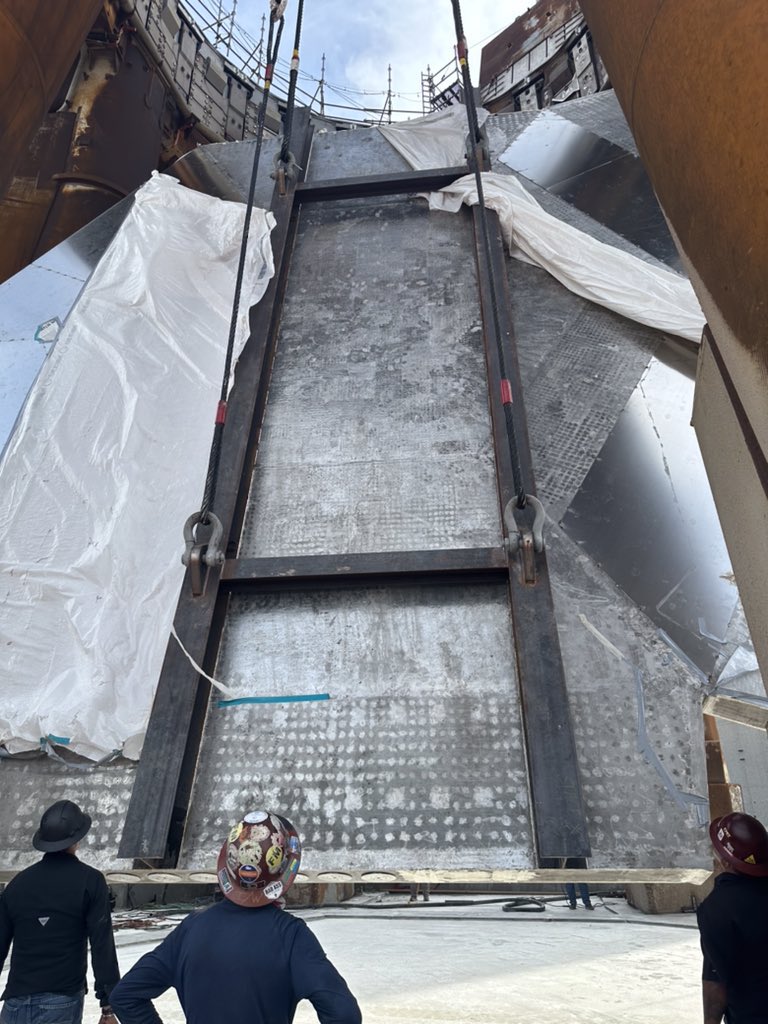
The goal of this system is to suppress the sound waves and shock waves created during the launch, which can quite literally rip the entire pad apart. As of early 2024, this design appears to be extremely effective.

Second Orbital Launch Tower
All of the components for a second Starship-enabled launch tower were assembled at the Cape Canaveral Roberts Road Facility (Starbase Florida) in late 2022. Elon Musk confirmed that these were spares in case a “rapid unscheduled disassembly” destroyed the tower. Initially, it was believed that SpaceX would build this tower at the Cape as long as it wasn’t needed at Starbase (There is already one launch tower at Cape Canaveral, so this would be the second.)

However, in late 2023 these pieces began being loaded onto barges bound for Starbase, and Kathy Leuders recently confirmed that SpaceX will soon assemble a second Orbital Integration Launch Tower right next to the first one at Starbase in Texas. This should help SpaceX test the “catch” maneuver (where the chopsticks grab rockets out of the air) without risking their only launch pad.
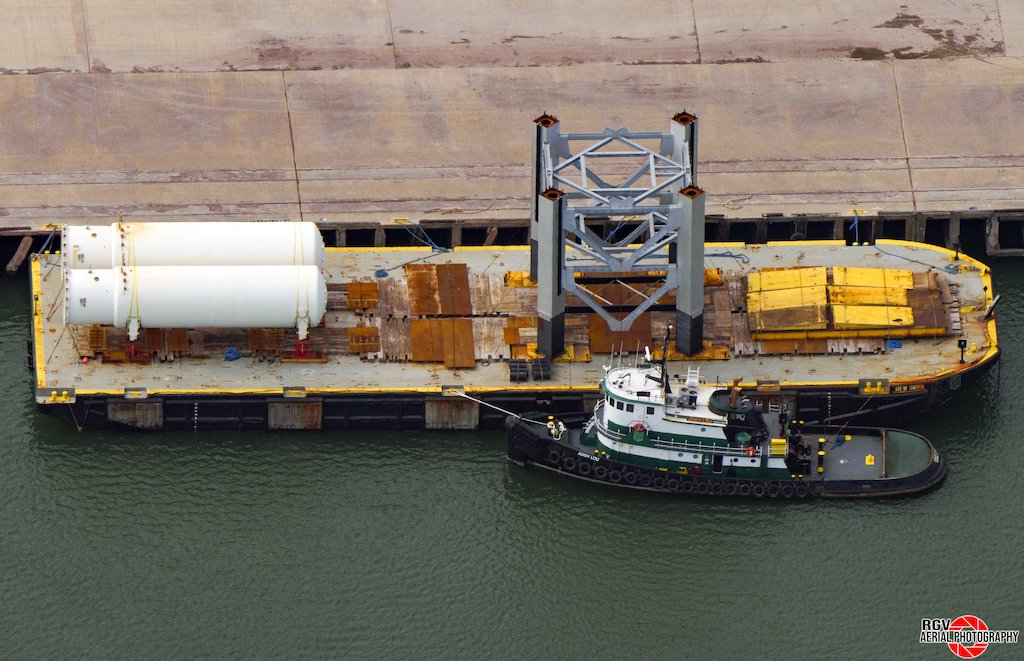
Tank Farm
The last component of the Launch Site is the Tank Farm. This is a large area near the launch pad with dozens of massive high-pressure tanks that contain liquid methane propellant, liquid oxygen oxidizer, and liquid nitrogen (an inert gas used for testing), and water. The components in the tank farm are ever-evolving — new tanks are added or reconfigured every month or two.

Aerial overview of the Tank Farm. Photo Credit: John Cargile / What About It?
There are also many subcoolers in this area that chill the gas down to be loaded onto the vehicle. These subcoolers have been upgraded over time which has increased the speed at which propellant can be tanked.

The total capacity of the farm is currently unknown but it usually requires a line of tankers any time to fill all of the tanks before any major launch testing event can occur.

The last thing worth noting is that Starships and Boosters must be moved around on public roads given the infrastructure currently at Starbase. This is typically done via a road closure which can be tracked on Cameron County’s official website. Transfers are typically done using the Self-Propelled Modular Transport, or SPMT, which is a large crawler with rows of wheels that can carry rockets between testing locations. Once the rocket arrives at a location, it is offloaded using a crane or the chopsticks.
Additionally, there are a few “Stands” that can either be mounted on top of the SPMT or used independently to assist with work around the Starbase facility. A few examples of these are the Raptor Stand, the Starship Stand, and a Thrust Simulator Stand.

The Raptor Stand. Photo Credit: LabPadre

The Starship Stand. Photo Credit: Starship Gazer

Thrust Simulator Stand. Photo Credit: Starship Gazer
...And Much More Coming Soon
Starbase continues to grow and evolve every day, and it is, in our humble opinion, the single most exciting place on the planet right now. The locations covered in this guide are just the tip of the iceberg. If you have the means, we highly recommend taking a trip to South Texas to see this magical place for yourself. (And if you want more information on how to plan a trip, check out our guide!)

The new SpaceX sign at the launch site. Photo Credit: Starbase Surfer
Updated Maps of Starbase Texas
For some of the best up-to-date labeled maps of the area, check out RGV Aerial Photography on YouTube or X. Flyovers of Starbase are performed on a weekly basis, and Mauricio has done an amazing job documenting the progress of the city of Starbase as it has grown over the past few years. Some other great photography resources are Starship Gazer, Starbase Surfer, Rocket Future, and more. We have also published a list that includes some of the other Starbase influencers we recommend following.
There is also a great Google map of the Starbase area that is maintained by Reddit community member Raul74Cz.
This article was last updated in January of 2024. All of the information surfaced in this guide has been sourced from publicly available resources on the web. Things are constantly changing at Starbase, but we will try to keep this guide as up-to-date as possible.
---
Starbase Brewing is not affiliated, associated, authorized, endorsed by, or in any way officially connected with SpaceX, or any of its subsidiaries or its affiliates. We are huge fans, though.

